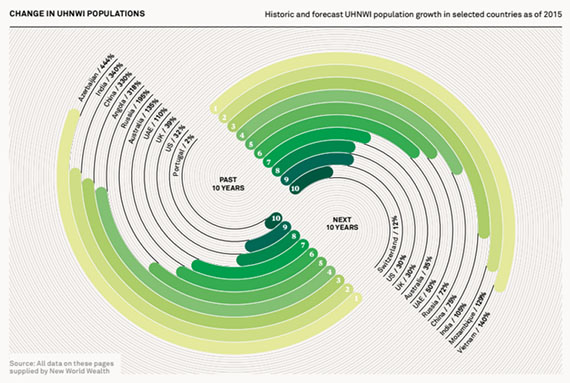Trending
Number of ultra-wealthy individuals falls for the first time since ’08: report
There were 6,000 fewer people with investable assets of at least $30M in 2015: Knight Frank

More sobering news for developers catering to ultra-wealthy buyers: There are fewer of them out there to woo.
Globally, the number of ultra-high-net-worth individuals (UHNWIs) — defined as those with investable assets of at least $30 million excluding their personal residences — dipped in 2015 for the first time since the 2008 financial crisis, according to a new wealth report by real estate firm Knight Frank.
There were 187,500 ultra-high-net-worth individuals across the world in 2015, 6,000 fewer (-3%) than last year, the report, prepared by Knight Frank in partnership with Douglas Elliman, shows. Among the hardest-hit countries were Canada, which ended the year with 24 percent fewer UHNWIs, and South Africa, which had 23 percent fewer. In the U.S., the number of UHNWIs fell 2 percent.
Knight Frank attributed the dip to ongoing volatility in the financial markets, a slump in the commodities market and a sharp fall in oil prices.
“The ongoing strength of the U.S. dollar also exacerbates any declines in local currency wealth for many UHNWIs when their net worth is expressed in dollar terms,” Andrew Amolis, head of research at data firm New World Wealth, said in the report. “Only two major currencies strengthened against the U.S. dollar in 2015 – the Japanese yen and the Israeli shekel. All other major currencies depreciated, some considerably.”
Those numbers are worrying for developers counting on the global wealthy to soak up what some say is excess inventory at the very top of the Manhattan market.
But during a panel discussion Thursday at the New York Public Library, Elliman chair Howard Lorber downplayed concerns about lagging demand in the luxury sector.
“Everyone wants to talk about the oversupply,” he said. “There really is no oversupply, except maybe in a little piece of the market – the very high priced things around 57th Street and Central Park. The market for overpriced things has slowed down. Aspirational pricing worked for a number of years and now it’s not working. But if you price something right, it sells relatively quickly.”
Zooming out and looking at a ten-year period, however, the number of UHNWIs is up 60 percent from 116,800 since 2005, the report shows.
But growth is slowing. By 2025, Knight Frank predicts the total number of UHNWIs is projected to go up by just 41 percent globally, to 263,500, driven in part by a 66 percent uptick in the number of wealthy individuals in Asia.
Growth so far has been most pronounced in emerging economies, such as Azerbaijan, India and China. The number of UHNWIs in those countries went up by 444 percent, 340 percent and 330 percent over the last 10 years, respectively.




